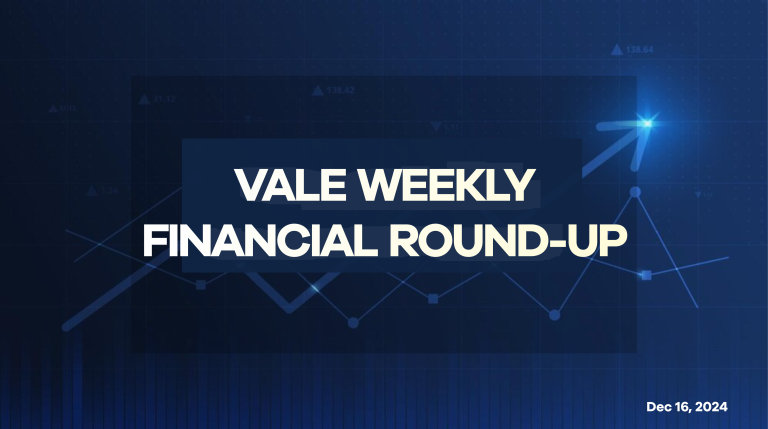Making Savings a Lifestyle
Some people make saving look so easy. You hear them saying things like, “I will just move that to my savings” or “I already set that aside last month.” And you wonder, how? Not because you’re not trying, but because life will always come with it challenges. There’s always something that needs attention: transport fare, rising food prices, or supporting family. For many of us, saving feels like a luxury we can’t afford. But what if we have been thinking about it the wrong way? Maybe it’s not about throwing a large amount of money into your savings but about building small habits that work for you.
The truth is, people who save consistently don’t necessarily earn more, they just make saving part of their routine. They set up systems that make it easy to stay on track: they automate small amounts, create barriers between what they spend and what they save, and treat savings like an essential bill, not merely what is left after settling other bills. Think of savings like locking your door every night: you don’t wait to feel inspired; you just do it because it keeps you safe. That is how savings work when it becomes a habit. You do It because it keeps you safe.
Make your money harder to touch
The more accessible your savings are, the more tempting it is to dip in for something that feels urgent. One unplanned situation or problem can quietly drain what you have built. That is why many savers keep their money in spaces that are not easy to access. It is not about locking your money away. It is about protecting your future from today’s distractions.
Start Small
The best part is, you don’t need a huge salary or a perfect plan to begin. What you really need is consistency. Start small, even N500 a day adds up. Over time, the habit will become stronger than the excuses. And when life throws something unexpected your way, you will be glad you started. Saving isn’t just about money; It’s about peace of mind, knowing there is a fund somewhere to rely on when urgent needs arise.
Make it an Habit
Think about the habits you already have, checking the locks before leaving home, saying a prayer before stepping out. They became a part of you because you repeated them, day in, day out. Saving can be like that too. Not a once in a while effort powered by guilt, but a quiet and steady choice that slowly shapes your future.
So, maybe saving is not about being rich. Maybe it is about being intentional. It’s about having breathing room when the world gets loud; about knowing you don’t always have to call someone for help, because you have been quietly preparing. And you don’t have to figure it all out in a day, just start small and keep going. Little by little, it will stop feeling like a struggle and start feeling like who you are, because it has become a Lifestyle.
NOW TO THE NEWS
My Vault now offers up to 24% Interest rate on locked funds
At Vale Finance, we are making long-term saving more rewarding than ever with My Vault, our locked savings Product that lets you grow your money securely while earning high returns which now offers up to 24% interest per annum. My Vault allows you to lock your money away for as little as one month or up to a year or more and enjoy high interest rates when your savings mature.
One of the most exciting features is that you can choose to receive interest upfront, giving them instant motivation and a cash boost as soon as you start saving.
The longer you keep their funds locked, the higher the return making it an ideal option if you want to make your money work harder while staying disciplined.
This saving product is available to both new and existing users on the Vale app. It offers a safe, flexible, and now more rewarding way to grow your finances.
Naira Ends May on a high note with ₦16.03 gain as External Reserves Rise
The naira wrapped up May 2025 on a positive note in the official foreign exchange (FX) market, appreciating by ₦16.03 against the dollar to close at ₦1,586.15 on May 30, compared to ₦1,602.18 on May 2. In contrast, the currency declined in the parallel market by 0.9 percent, ending at ₦1,620/$, a ₦15 depreciation from the ₦1,605 quoted at the start of the month highlighting continued segmentation in Nigeria’s FX landscape.
Nigeria’s external reserves increased by $460 million or 1.2 percent during the month, rising from $38.00 billion to $38.46 billion, signaling improved dollar inflows and potentially giving the Central Bank of Nigeria (CBN) more leverage to sustain its interventions aimed at stabilizing the naira.
The CBN also launched the Non-Resident Diaspora Bank Verification Number in partnership with NIBSS to deepen financial integration with Nigerians abroad. Governor Olayemi Cardoso reaffirmed the Bank’s commitment to attracting as much as $1 billion in monthly diaspora remittances, emphasizing adherence to the FX Code and regulatory compliance as crucial for a stable and efficient FX regime.
Money Supply in Nigeria Increases by 4% to ₦119.1 Trillion
Nigeria’s Money Supply (M2) rose by 4.2 percent month-on-month to ₦119.1 trillion in April 2025 from ₦114.2 trillion in March, following the Central Bank of Nigeria’s (CBN) decision to maintain the Monetary Policy Rate (MPR) at 27.5 percent. The Monetary Policy Committee (MPC) emphasized the importance of monitoring global economic uncertainties before making further adjustments to monetary tools.
CBN’s Money and Credit Statistics revealed that the increase in money supply was driven by key components. Quasi-money, which includes savings deposits and other near-money assets, rose by 3.17 percent to ₦78.1 trillion, while Demand Deposits grew by 7.4 percent to ₦36.4 trillion. Narrow Money (M1) climbed by 6.2 percent to ₦41 trillion, even as currency outside banks recorded a slight decline of 0.4 percent to ₦4.57 trillion.
Credit to the government declined by 8.8 percent to ₦23.6 trillion, marking the second consecutive monthly drop since March. On the other hand, credit to the private sector rose by 2.1 percent to ₦77.9 trillion. This divergence contributed to a 0.61 percent decline in net domestic credit, which stood at ₦101.5 trillion at the end of April.
FG Explains Framework for External Borrowing
The Federal Government has clarified that the 2024–2026 External Borrowing Plan submitted to the National Assembly is a framework to support the Medium-Term Economic Framework (MTEF) and not an immediate loan request. It covers both federal and state governments and outlines potential borrowing over a three-year period, not actual debt commitments.
According to the Ministry of Finance, the actual external borrowing for the 2025 fiscal year is $1.23 billion, which is planned for the second half of the year. The plan includes project tied loans with multi-year drawdowns targeted at critical sectors such as power, transportation, food security, and national security.
Most of the funding will come from development partners such as the World Bank, African Development Bank, and others, under concessional terms with favorable repayment conditions. The government emphasized that the focus is on sustainability, efficient use of funds, and economic impact.
It also noted that the borrowing plan is designed to enhance long-term financial planning and reduce reliance on ad hoc borrowing. The government reaffirmed its commitment to keeping borrowing within sustainable limits in line with the DMO Debt Sustainability Framework.


